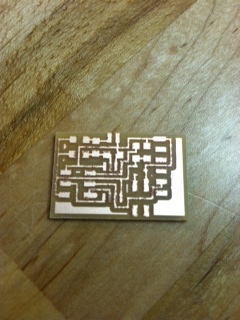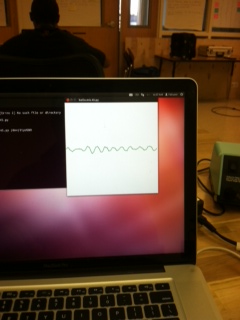
This week we focused on input devices, and I programmed a board with a microphone to detect and measure sound.
First, I downloaded the traces and the interior for the hello.mic.45 and sent them to the Modela via Fab Modules, which milled the board.

Once the machine milled the board, I soldered the components onto the board. As noted in the lecture, the FTDI connector is not a good source of power for this particular board; therefore, I used a 9 volt battery in order to give it power. Instead of using the 4 pin connector, I soldered two wires directly to the board in order to connect to the battery.

I downloaded the C File and the Makefile from the class page in order to program my board (in Windows). I did run into a few problems when trying to get the programmer to work with my board, and I ultimately found that there were a few connections that were shorted, which I did not catch earlier. After reworking the shorted connections on my board, I was finally able to program my new board.
Once I programmed my board, I went into Ubuntu in order to run python. I downloaded the python file for the sound board into Ubuntu. After running the command for python in the terminal, I saw the visualization of my microphone's sound measurements. In order to test the microphone's sensing capacities, I played Adele's "Rolling in the Deep" and watched the occilations in python.
